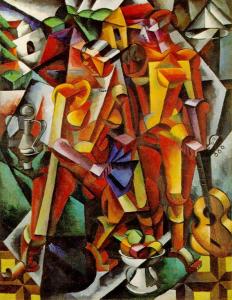
Cubism is famous for its difficulty, and the fact that in the early years of its development, Picasso and Braque treated it as a secret, denying its existence to outsiders. It’s very brown, it’s visually severe, it’s hard to enter. What, exactly, was Cubism?
I think Cubism has been seen as an intellectual art form that puts off some people, partly because of the way it’s been taught and certainly because of misunderstandings. In working on this exhibition for the past year and a half, I have constantly been surprised by the wit in these works, the play, the sense of humor that these young artists exhibited in these pictures. But Cubism developed at a time in the early 20th century when people were challenging everything that was accepted about the world around them, about how it looked. You had Freud reinterpreting dreams and seeing them as being the key to who we are, you had Einstein’s theories of relativity, you had people who could go up in airplanes and photograph aerial views, so if you saw a picture of a farm, all of a sudden that picture of a farm didn’t look at all like what you would have thought. It was completely flattened and rendered from a different perspective. You also had x-rays showing the innards of people and objects. So, everything was being challenged at this moment, and these young artists—Picasso, Braque, Gris, and Léger—were aware of what was happening in the sense of its newness. Read on …
